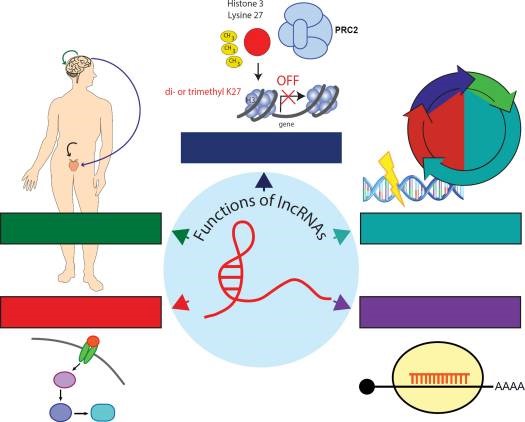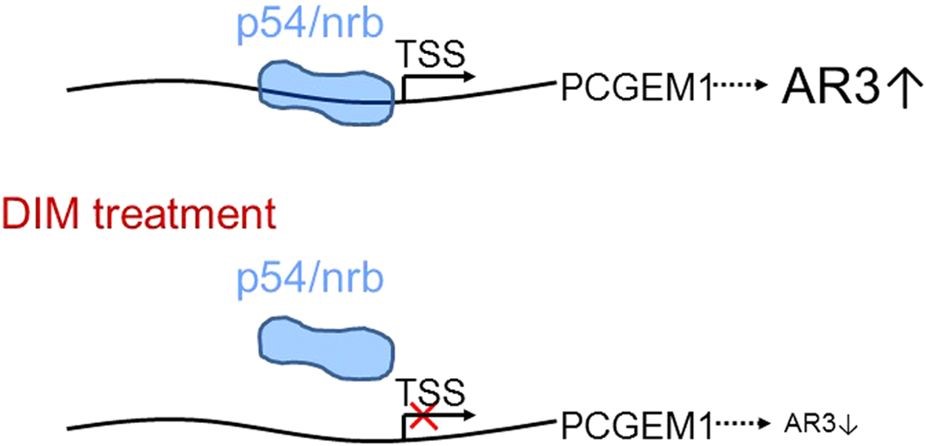Prostate Cancer
Clinical Implications for Long Non-coding RNAs in Prostate Cancer



Posted November 27, 2018
Chi Dang, M.D., Ph.D., The Wistar Institute and Ludwig Institute for Cancer Research
Rohit Mehra, M.D., University of Michigan
Yin-Yuan Mo, Ph.D., University of Mississippi
Before the discovery of non-coding RNA genes in cancer, the search for novel genes that drive the development of cancer was focused mainly on protein-coding genes, called messenger RNA, which consists of only 2% of the human genome. During the last decade, advances in next-generation sequencing enabled the discovery of long non-coding RNA (lncRNA) transcripts, a new category of molecules that function in a spatiotemporal manner in normal tissue and cancer development. LncRNAs have been implicated in the development and progression of a variety of cancers, including prostate cancer (Pca). However, to date only a hand full of lncRNAs have been characterized and studied in PCa and their clinical utility and therapeutic potential remain unknown. The PCRP's investment in this innovative area of research has led to some promising results that have the potential for future impact for patients.

The Wistar Institute and Ludwig Institute for Cancer Research
Dr. Chi Dang and colleagues at the University of Pennsylvania (now at The Wistar Institute and Ludwig Institute for Cancer Research) are investigating the potential of lncRNA signatures to predict clinical outcomes for PCa patients. With support from a FY14 Idea Development Award, they discovered that the lncRNA DANCR is highly elevated in PCa tumors and is essential for PCa cell line growth. Additionally, they found that it functions through suppressing p21, a gene that inhibits the proliferation of cancer cells. Future studies aim to determine the clinical relevance of these findings by assessing DANCR expression in prostate biopsy samples and prostatectomy tissues, which will indicate if DANCR could serve as a novel biomarker for PCa patients.

A. MYC and DANCR expression levels are elevated in paired tumor versus normal prostate samples from TCGA.
B. Increased MYC and DANCR expression in primary human paired tumor versus normal prostate samples measured by RT-‐PCR analysis.

University of Michigan
At the University of Michigan, investigators are also searching for novel lncRNAs that could be clinically relevant for PCa patients. With support from a FY15 Idea Development Award, Dr. Rohit Mehra and colleagues used RNA sequencing to profile the transcriptome of >100 PCa tissues and cell lines and found that ~20% of RNA transcripts in PCa represent novel, uncharacterized lncRNA genes. One lncRNA of great interest to this group is PRCAT47 (a.k.a. ARLNC1). They found that PRCAT47 is expressed in a prostate tissue-specific manner and has elevated expression in localized and metastatic PCa. They also observed that loss of this lncRNA inhibits cell proliferation and affects androgen receptor (AR) signaling, a crucial pathway in PCa cell survival. In their current study, they have demonstrated that PRCAT47 mediates AR post-transcriptionally and lncRNA-interacting proteins are likely to be involved in this regulation process, confirming that PRCAT47 has potential to serve as a diagnostic PCa biomarker.


University of Mississippi
Dr. Yin-Yuan Mo at the University of Mississippi wanted to see how lncRNAs are involved in alternative splicing of AR and contribute to castration resistance (resistance to AR therapy). With support from FY11 and FY14 Exploration-Hypothesis Development Awards, Dr. Mo and his colleagues identified PCGEM1 as a major lncRNA that is upregulated in PCa specimens and castration resistant cell lines, and showed that PCGEM1 is induced by androgen deprivation. Additionally, they found that 3,3'-Diindolylmethane (DIM), a known chemoprevention agent in Phase 2 clinical trials, is capable of suppressing PCGEM1 expression in PCa mouse models. This suggests that PCGEM1 may be a new therapeutic target for castration-resistant PCa.

A proposed model for p54/nrb-mediated regulation of PCGEM1. Once cells are treated with DIM, DIM prevents p54/nrb from binding to PCGEM1 promoter, and decreases the expression of PCGEM1, thus resulting in the down-regulation of AR3. TSS: transcription start site.
Taken together, recent research from three separate PCRP-funded laboratories has contributed to increased knowledge of lncRNAs and their importance in PCa biology. Specifically, this work has demonstrated that newly discovered lncRNAs, such as DANCR and PRCAT47, have the potential to be novel biomarkers for PCa patients. Additionally, lncRNAs such as PCGEM1 may serve as important therapeutic targets for treating patients with aggressive, castrate-resistant PCa. While further investigation is needed to confirm these results and translate this work, the PCRP's investment in this novel line of research has helped pave the way for future advancements.
References:
Lu, Yunqi, et al. "MYC targeted long noncoding RNA DANCR promotes cancer in part by reducing p21 levels." Cancer research 78.1 (2018): 64-74.
Zhang, Yajia, et al. "Analysis of the androgen receptor-regulated lncRNA landscape identifies a role for ARLNC1 in prostate cancer progression." Nature genetics 50.6 (2018): 814-824.
Zhang, Ziqiang, et al. "Regulation of androgen receptor splice variant AR3 by PCGEM1." Oncotarget 7.13 (2016): 15481.
Last updated Friday, March 7, 2025














